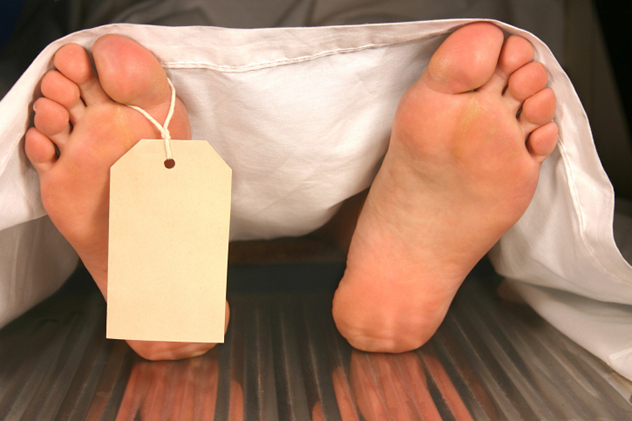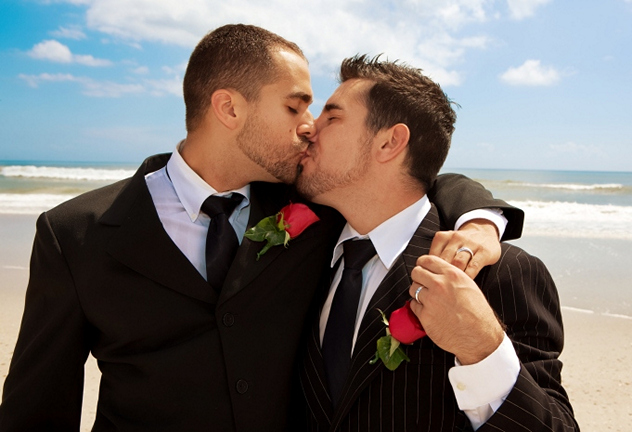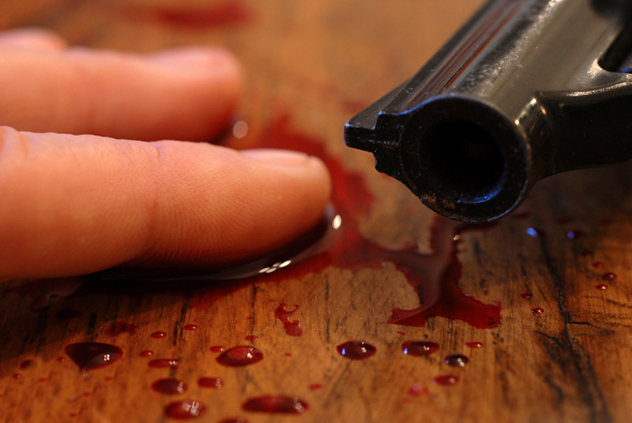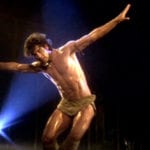 Our World
Our World  Our World
Our World  Movies and TV
Movies and TV The 10 Coolest Stars to Set Sail on The Love Boat
 History
History 10 Things You Didn’t Know About the American National Anthem
 Technology
Technology Top 10 Everyday Tech Buzzwords That Hide a Darker Past
 Humans
Humans 10 Everyday Human Behaviors That Are Actually Survival Instincts
 Animals
Animals 10 Animals That Humiliated and Harmed Historical Leaders
 History
History 10 Most Influential Protests in Modern History
 Creepy
Creepy 10 More Representations of Death from Myth, Legend, and Folktale
 Technology
Technology 10 Scientific Breakthroughs of 2025 That’ll Change Everything
 Our World
Our World 10 Ways Icelandic Culture Makes Other Countries Look Boring
 Our World
Our World 10 Ways Your Christmas Tree Is More Lit Than You Think
 Movies and TV
Movies and TV The 10 Coolest Stars to Set Sail on The Love Boat
 History
History 10 Things You Didn’t Know About the American National Anthem
Who's Behind Listverse?

Jamie Frater
Head Editor
Jamie founded Listverse due to an insatiable desire to share fascinating, obscure, and bizarre facts. He has been a guest speaker on numerous national radio and television stations and is a five time published author.
More About Us Technology
Technology Top 10 Everyday Tech Buzzwords That Hide a Darker Past
 Humans
Humans 10 Everyday Human Behaviors That Are Actually Survival Instincts
 Animals
Animals 10 Animals That Humiliated and Harmed Historical Leaders
 History
History 10 Most Influential Protests in Modern History
 Creepy
Creepy 10 More Representations of Death from Myth, Legend, and Folktale
 Technology
Technology 10 Scientific Breakthroughs of 2025 That’ll Change Everything
 Our World
Our World 10 Ways Icelandic Culture Makes Other Countries Look Boring
10 Memorable And Defiant Firsts In TV History
Society has more or less always controlled what should be allowed to air on television, and there has always been some form of unspoken taboo on certain sensitive issues. Nevertheless, there have been moments in television history when a few took a stand and wished to eliminate the barriers placed by society. Here are some of the more defying and memorable moments.
10Death Of A TV Character

The first time a TV show had to deal with the death of a character was in 1972, when Dan Blocker—the actor who played Hoss Cartwright in Bonanza—passed away unexpectedly. After his death, the producers decided the character of Hoss would be killed in an accident on the show. The incident was hard on the cast, crew, and audience, since Blocker was loved by all. The future success of the show was put in question.
Reality TV’s first on-screen death was Phill Harris, captain of the crab-fishing vessel on the Discovery Channel show Deadliest Catch. Harris’s death was caused by many years of substance and alcohol abuse. Harris saw it coming and even addressed his poor health in an earlier episode. The production team, devout to the genre, decided to broadcast the whole incident as delicately as they could.
9First Person To Say The F-Word

In 1976, punk icons The Sex Pistols were “unofficially” banned from live television after swearing repeatedly on ITV’s Today program. Three decades later, ITV apparently decided they had learned their lesson and invited lead singer John Lyndon to appear on the popular I’m A Celebrity…Get Me Out Of Here! During the closing moments of the show, Lydon—angry about the voting audience’s failure to elect him as the night’s loser—accused them of being “f– –ing c– –ts.” Lyndon’s words came to be known as the most vulgar imprecations ever to be broadcast on live British TV.
But not even Lyndon caused quite as much fuss as a theater critic named Kenneth Tynan did in 1965, when he became the first man to say the F-word on television. This was considered a huge scandal and resulted in a formal apology by the BBC, four separate motions in the House of Commons, and a very critical letter to the queen.
8Lingerie Ad

Before 1987, most lingerie models on TV were mannequins. The ones that were not, were required to model the underwear atop their clothing, which meant that even underwear models weren’t supposed to show any skin.
Nevertheless, Playtex had different ideas and was the first company to air a lingerie commercial using real models without the extra, anti-cleavage clothing—a lot more skin than audiences were used to.
7Condom Ad

In 1991, Fox Network, during a quirky teen show known as Howard’s Head, aired what is known as network TV’s first condom advert. By playing the 15 second ad from condom maker Trojan, Fox brushed aside a long held taboo. This type of ad was essentially only allowed because of the rising awareness of AIDS and prevention of STDs.
In 2007, Trojan attempted to air an ad in which there is a bar filled with women, and the men are portrayed by pigs fumbling about on their cellphones. One of them slips into the bathroom and procures a condom through a vending machine—emerging out a spry young man in his twenties. The ad would end with the message “Evolve. Use a condom every time.”
The ad was rejected by two of the four major networks—namely Fox and CBS—both of which had accepted Trojan’s previous campaign. The new campaign was rejected because it had crossed the line between disease prevention and pregnancy prevention.
6Interracial Kiss

Television’s first interracial “kiss” was when Sammy Davis Jr. in Movin’ With Nancy, played a photographer that took pictures of Nancy Sinatra. At the very end of their photo shoot, he gave Nancy a peck on the cheek.
However, TV’s first actual interracial kiss was shared between William Shatner (playing Captain Kirk) and Nichelle Nichols (playing Lieutenant Uhura) in a 1968 episode of Star Trek. They became the first interracial couple to lock lips on screen.
This, of course, sparked tons of controversy, and some stations in the Southern US states even refused to air the episode at all. England purportedly refused to put it on air for nearly 25 years. Furthermore, Shatner maintains that the two never actually kissed and only made it look like it, while Nichols firmly maintains that it was all real.
5Same-Sex Kiss

Dawson’s Creek characters Jack McPhee (Kerr Smith) and Ethan (Adam Kaufmann) shared the first ever on-screen homosexual kiss in the season finale. In the prior season, Jack had finally come out after breaking up with his girlfriend and found love with close friend, Ethan. The story—of a young small-town boy dreaming of becoming a filmmaker, having a crush on the girl next door, longed for by his best friend, and in love with Spielberg—is actually the autobiography of the show’s producer Kevin Williamson.
The first homosexual kiss ever was actually meant to be aired two years before Dawson’s Creek made history. A show called Melrose Place was meant to air an episode where Matt (Doug Savant) shared a kiss with his boyfriend, Rob (Ty Miller). The kiss was never actually aired on television, because one of the show’s main advertisers threatened to pull back if the scene was shown.
4Bare Breasts

The first time that the viewing audience was exposed to the sight of a woman’s bare breasts on television was long before journalists coined the term “wardrobe malfunction.”
PBS was responsible for the first intentional show of breasts on television, when actress Valerie Perrine was shown nude on TV show Steam Bath. Before Perrine became known as the first woman to purposely appear nude on TV, she had been a Las Vegas showgirl.
3Sex Orgy

In the 50s, sex on television did not exist. Married couples on TV shows slept in separate twin beds. I Love Lucy is a good example of this, especially because the actors playing Lucy and Ricky were also married off-screen. Over time, increasing amounts of sexual content on prime time TV led to sex scenes being acceptable—even airing at times when children would be watching.
In 2004, CBS’s Without a Trace aired an episode in which a teenage girl recalls a passionate orgy that led to a murder. The scene was filled with underage and under-clothed high-school teenagers. CBS was fined 3,6 million dollars due to the massive scandal the episode had created.
2Abortion

In 1964, a daytime soap opera Another World was the first TV show to ever discuss abortion. This was nine years before the Roe vs. Wade case, which made abortion legal for women in the United States. One of the show’s characters, Pat, travels to New York with her boyfriend to get an illegal abortion. Soon after, she discovers that he does not love her and—in a dramatic turn of events—kills him. Talk about early TV-drama.
Channel 4 finally slapped the abortion taboo in the face when it broadcast a live abortion. It also showed pictures of aborted fetuses at different stages of development. The producer of the show, Julia Black, had an abortion at age 16 herself. At 34 she went on to have a baby. With the documentary, she wished to kick-start the lazy abortion debate.
1Suicide Broadcast Live

On June 23, 1938, Marion Perloff jumped from atop the 11-floor-high Time & Life Building (New York) and plummeted to her death. Many other suicides followed the same year. However, Perloff’s suicide leap was the first ever to be recorded on camera. NBC cameraman, Ross Plaisted, was testing his equipment in a nearby building, when he spotted Perloff. He started filming when she reached the sixth floor and followed her all the way to the ground. The actual footage was never broadcast on television.
On July 16, 1974, Christine Chubbuck made the news when, during her TV broadcast, she suddenly went off-script and said, “In keeping with Channel 40’s policy of bringing you the latest in blood and guts, and in living color, you are going to see another first: an attempted suicide.” She then pulled out a gun, placed it by her right ear, and shot herself. The TV channel cut the broadcast. Chubbuck was transported to a hospital, where she wasn’t declared dead for another 14 hours.








